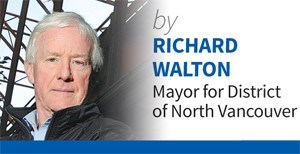In the current provincial election campaign two parties recently committed to either reduce tolls, in the case of the B.C. Liberals, or eliminate tolls completely, in the case of the NDP, for the Golden Ears and Port Mann bridges.
What seems to be forgotten is that both were financed largely by private third parties who are still owed hundreds of millions of dollars. If the tolls go, where does the money come from to pay for this debt?
We should instead be having a discussion about how the government funds regional infrastructure. For instance, we need a clear definition of what the province’s tolling policy will be on new and existing infrastructure. Right now, the only policy is that one crossing needs to remain free of charge. Ask New Westminster how that’s working, as they experienced a 15 per cent increase in traffic coming over the Patullo Bridge since tolls were implemented on the Port Mann and Golden Ears bridges.
The Pattullo was “given” to TransLink several decades ago by the province, which was pretty pleased to get the 80-year-old bridge off its balance sheet. The financing details for its imminent and necessary replacement, and whether tolling will be involved, have not yet been made clear.
So why should anyone on the North Shore care about this? Because the lack of provincial policy on tolling affects us too. We’re vulnerable to a politically driven policy that could place tolls on old infrastructure, such as the Lions Gate and Ironworkers Memorial bridges, without having had a broad discussion of what constitutes regional fairness and equity.
As chairman of the TransLink Mayors’ Council from 2010 to 2015, I worked with four different transportation ministers over five years, always stressing the importance of developing an integrated approach to regional transportation planning that would balance transit, road, and bridge/tunnel construction priorities through competing business plans.
No success. Instead, we have referenda requirements applied to any new source of transit funding, while massive financial commitments can be made on the fly for new bridges, or ignoring existing debt obligations.
The North Shore should pay close attention for two reasons. Any suggestion of tolls on regional bridges would likely include local bridges, yet tolls collected would likely contribute nothing to solving the North Shore’s mobility problems.
And with both main parties committing to reduce Fraser River crossing tolls, our bridges are tempting cash cows.
Also, we can’t have a meaningful conversation on the North Shore about our future transportation needs until we understand the policy rules.
For instance, a new bridge to the North Shore could only parallel the Ironworkers and would have to include rapid transit capability, yet the two agencies that could deliver such a project do their planning separately from each other, and they have completely different governance models. Any of the four provincial political parties can cut through this Gordian Knot, should they choose to do so. We all want better regional transportation options, and we all realize that it must be paid for.
Give us the rules so we can plan together, make decisions based on widely understood criteria, and have projects compete for scarce funds based on sound business model planning.



